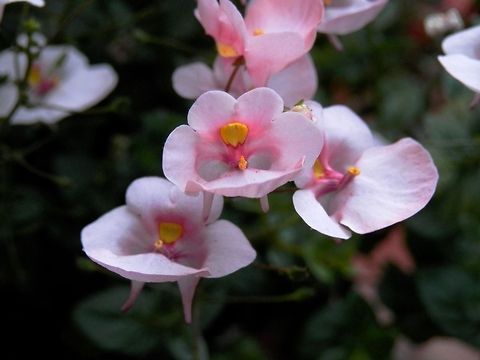
Appearance
Diascia integerrima is one of the most widespread, toughest and floriferous of the all the Diascia species. It grows in clumps branching from the ground into many wiry, but rigid stems. Sometimes the square stems can get a bit woody at the base, but they are usually soft and blue-green. The stems are 30-40 cm tall, but grow longer if they have to climb through surrounding bushes. The narrow leaves are mostly at the bottom of the stems, with a few smaller ones towards the top where the fat flower buds hang like little bells. While the bottom flowers open, new buds are continually forming at the tip of the stems and flowers are produced throughout the summer. Close-up these bright pink flowers are very interesting."Horns" or "Spurs"on the flowersTypical of Diascia, the flowers have two long horns or spurs at the back of the flower, which has given this genus the common name of twinspurs. The flower is shaped with a large drooping lower lip and four smaller curly petals at the top. At the centre of the flower there is a bright yellow and maroon concave patch called a "window". The pollination of diascias by special oil collecting bees in the wild, is fascinating. These specialized bees have modified forelegs with which they collect oil from inside the two spurs. Once cross-pollinated, little round seeds are formed in capsules. Within a few weeks the seed capsules turn brown and dry, split open and release the ripe seeds that are black and hard.The genus Diascia contains about 70 species, and is found only in southern Africa. The summer rainfall area of the KwaZulu-Natal Drakensberg is rich in perennial species like Diascia integerrima while about 50, mostly annual species are found in the winter rainfall area of the Western Cape and Namaqualand. The genus name Diascia is derived from Greek meaning di = two and askos = sac, referring to the two oil containing spurs.
References:
Some text fragments are auto parsed from Wikipedia.